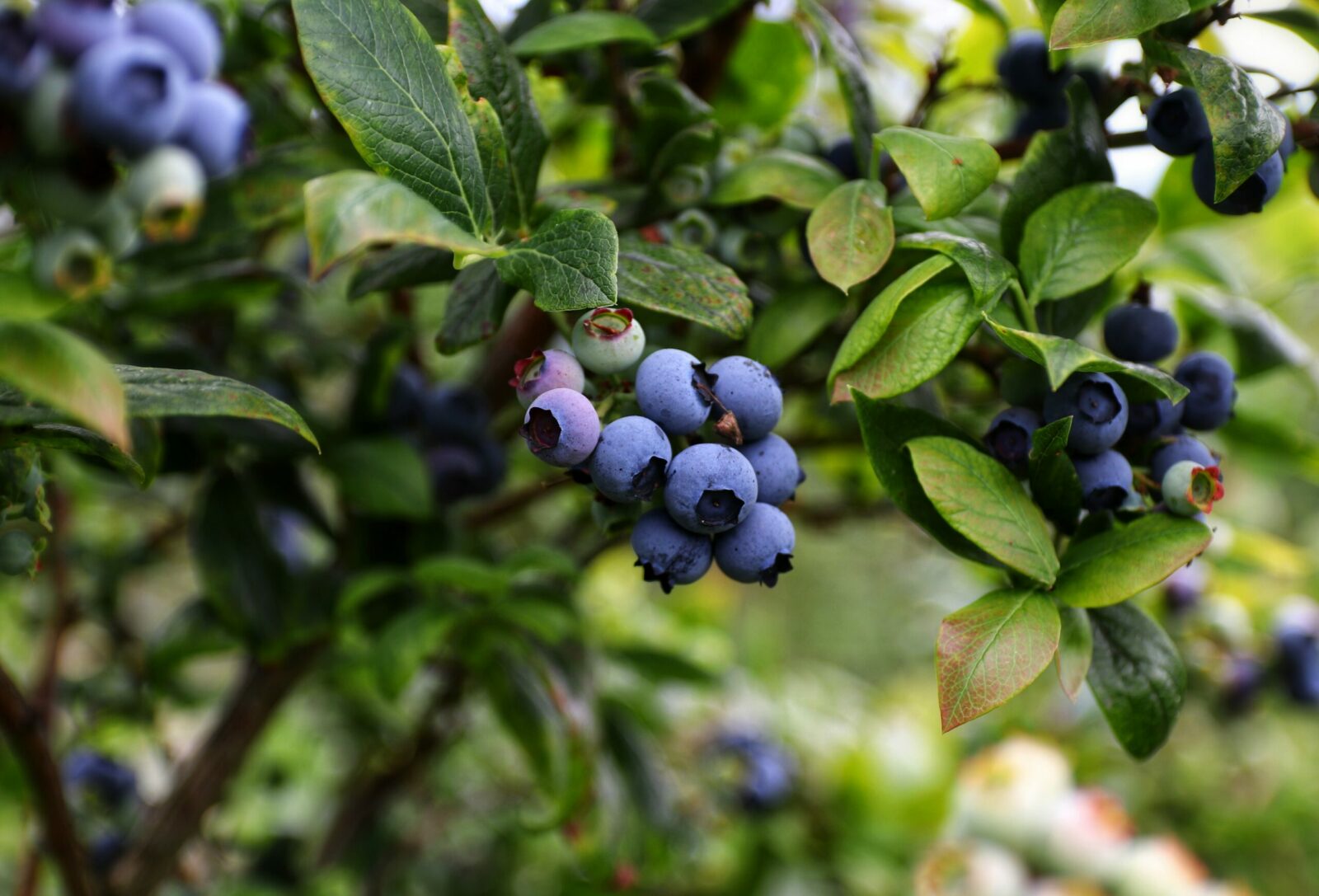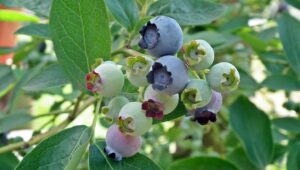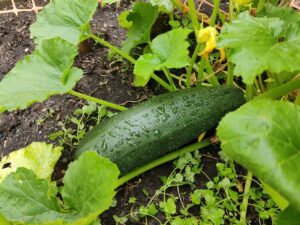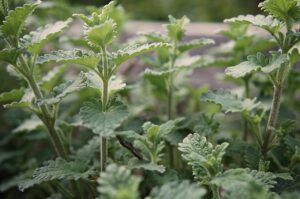Master the Art of Blueberry Cultivation
Are you interested in growing your own blueberries from seed? Blueberries are delicious and offer numerous health benefits, such as being high in antioxidants, fibre, and vitamins. Learning how to grow blueberries from seed may seem like a challenging task, but with this comprehensive guide, you’ll be well on your way to harvesting your very own blueberries in no time.
In this article, we will cover the necessary steps and considerations on how to grow blueberries from seed, including selecting the right variety, preparing the soil, planting, caring for the plants, and harvesting. Optimize your success by following this step-by-step guide, ensuring that your blueberries will thrive and produce a bountiful harvest.
Blueberry Varieties

The first step in growing blueberries from seed is selecting the right variety for your specific location and climate. There are four main types of blueberries:
- Northern Highbush Blueberries: These are best suited for USDA Hardiness Zones 4-7 and require significant chilling hours (between 800-1,000) during winter.
- Southern Highbush Blueberries: Ideal for USDA Zones 7-10 and need fewer chilling hours (around 150-800) than their northern counterparts.
- Lowbush Blueberries: Also known as wild blueberries, these plants are native to North America and thrive in USDA Zones 2-6. They require fewer chilling hours (around 800-1,200) and are low-growing, reaching heights of only 1-2 feet.
Wild Lowbush Blueberries - Rabbiteye Blueberries: These varieties are adapted to the warmer climates of USDA Zones 7-9 and require 200-800 chilling hours. Rabbiteye blueberries are known for their drought tolerance and vigorous growth.
How to Grow Blueberries from Seed
Growing your own blueberries can be a rewarding and enjoyable gardening experience. Blueberries are not only delicious and nutritious but also serve as beautiful ornamental plants in your garden. This guide will walk you through the process of how to grow blueberries from seed, starting with the crucial step of cold stratification.
How to Cold Stratify Blueberry Seeds
- Preparing the seeds: Before you start growing blueberries from seed, it’s essential to cold stratify the seeds. Cold stratification is a process that simulates the natural winter conditions that the seeds would typically experience in the wild. This process breaks seed dormancy and encourages germination.
- Moisten the growing medium: Begin by moistening the peat moss or seed starting mix. It should be damp but not soaking wet.
- Combine seeds and growing medium: Mix the blueberry seeds with the moistened growing medium, ensuring that the seeds are evenly distributed.
- Place in a container: Transfer the seed and growing medium mixture into a resealable plastic bag or container. Seal it securely to maintain moisture.
- Refrigerate: Place the sealed container in the refrigerator for 6 to 8 weeks. This will simulate the winter season and help break the seed dormancy. Check on the container periodically to ensure that the growing medium remains moist.
Germinating Blueberry Seeds
- Remove from the refrigerator: After the cold stratification period, remove the seeds from the refrigerator.
- Prepare the planting trays or pots: Fill planting trays or pots with a high-quality seed starting mix, leaving about 1/4 inch of space from the top.
- Plant the seeds: Gently press the stratified blueberry seeds into the surface of the seed starting mix. Space them out evenly to give each seedling enough room to grow. Lightly cover the seeds with a thin layer of the mix.
- Water the seeds: Water the seeds gently, ensuring the soil remains consistently moist but not waterlogged. It’s essential to avoid overwatering, as this can lead to seed rot and poor germination.
- Provide light: Place the trays or pots in a well-lit area or under a grow light, as blueberry seeds require plenty of light to germinate.
- Germination: Blueberry seeds typically germinate within 4 to 6 weeks. Keep an eye on the seedlings and continue to provide water and light as needed.
Hardening Off Blueberry Seedlings
Hardening off is a crucial step in preparing your blueberry seedlings for life outdoors. It helps them acclimate to the outdoor environment, reducing the risk of transplant shock, sunburn, or damage from extreme temperatures. Follow these steps to harden off your blueberry seedlings:
- Begin the hardening process: Start the hardening off process about two weeks before you plan to transplant your blueberry seedlings outdoors. Gradually expose them to outdoor conditions to help them adjust.
- Increase outdoor exposure: Place the seedlings in a sheltered spot outside for a short period, initially just an hour or two. Over the next two weeks, gradually increase the time spent outside each day, ensuring they receive some direct sunlight but are protected from harsh winds and extreme temperatures.
- Monitor the seedlings: Keep an eye on your seedlings during the hardening-off process. Ensure they do not become too dry or stressed by outdoor conditions. Water them as needed, and if they show signs of wilting or sunburn, reduce the amount of sunlight exposure and extend the hardening-off period.
- Gradual transition: Throughout the two-week hardening-off process, slowly introduce your blueberry seedlings to more sun, wind, and temperature fluctuations. By the end of this period, your seedlings should be able to withstand full sunlight and typical outdoor conditions for your region.
- Nighttime temperatures: Make sure the nighttime temperatures in your area are consistently above freezing before leaving the seedlings outside overnight. Blueberry seedlings are sensitive to frost, and freezing temperatures can severely damage or kill them.
Transplanting Blueberry Seedlings
- Choose the right time: Once your blueberry seedlings are hardened off, it’s time to transplant them into your garden or larger pots. The ideal time to transplant is in the early spring or fall when temperatures are mild and soil moisture is adequate.
- Select the planting location: Blueberries require well-draining, acidic soil with a pH of 4.5 to 5.5. Choose a spot with full sun exposure, as blueberries need at least 6 to 8 hours of direct sunlight each day for optimal growth and fruit production.
- Prepare the planting site: Dig a hole twice as wide and just as deep as the root ball of your blueberry seedling. Mix compost or aged manure into the excavated soil to improve soil structure and fertility.
- Plant the seedling: Carefully remove the seedling from its pot, being mindful not to damage the delicate roots. Place the seedling in the hole, making sure the top of the root ball is level with the surrounding soil. Fill in the hole with the amended soil and gently firm it down around the base of the plant.
- Water and mulch: Thoroughly water the transplanted seedling, and apply a 2 to 4-inch layer of organic mulch, such as pine bark or pine needles, to help conserve soil moisture, suppress weeds, and maintain soil acidity.
- Ongoing care: Monitor your transplanted blueberry plants closely for the first few weeks, ensuring they receive adequate water and nutrients. Fertilize with an acid-forming fertilizer according to the package instructions.
How to Plant Blueberries
Transplanting blueberry bushes can be an essential step to ensure their successful growth and development. This section will provide a brief guide on how to plant blueberries and how to transplant blueberry bushes.
How to Transplant Blueberry Bushes
- Choose the right time: The best time to transplant blueberry bushes is in early spring or fall when temperatures are mild and soil moisture is adequate.
- Select the planting location: Blueberries require well-draining, acidic soil with a pH of 4.5 to 5.5. Choose a spot with full sun exposure, as blueberries need at least 6 to 8 hours of direct sunlight each day for optimal growth and fruit production.
- Prepare the planting site: Dig a hole twice as wide and just as deep as the root ball of your blueberry bush. Mix compost or aged manure into the excavated soil to improve soil structure and fertility.
- Plant the bush: Carefully remove the blueberry bush from its container, being mindful not to damage the delicate roots. Place the bush in the hole, making sure the top of the root ball is level with the surrounding soil. Fill in the hole with the amended soil and gently firm it down around the base of the plant.
- Water and mulch: Thoroughly water the transplanted blueberry bush, and apply a 2 to 4-inch layer of organic mulch, such as pine bark or pine needles, to help conserve soil moisture, suppress weeds, and maintain soil acidity.
Blueberry Plant Care
Proper care is essential for the successful growth and fruit production of your blueberry plants. This section will provide guidance on blueberry plant care, focusing on watering, fertilizing, and mulching.
Watering Blueberries
- Consistent moisture: Blueberry plants require consistent moisture, especially during the growing season. The soil should be kept moist but not waterlogged.
- Watering frequency: Water your blueberry plants every 7 to 10 days during dry periods. Adjust the frequency based on weather conditions, and be sure to water more frequently during hot, dry spells.
- Deep watering: Water your blueberry plants deeply, ensuring the water reaches the root zone. This promotes a healthy and extensive root system.
- Drip irrigation: Consider using a drip irrigation system to provide consistent moisture to your blueberry plants while conserving water and reducing evaporation.
Best Blueberry Fertilizer
- Acidic fertilizer: Blueberries thrive in acidic soil, so choose a fertilizer specifically formulated for acid-loving plants. Fertilizers labelled for azaleas, rhododendrons, or camellias are suitable for blueberries.
- Fertilizing schedule: Apply fertilizer in early spring as the buds begin to swell and again in late spring after the fruit has set. Avoid fertilizing late in the season, as this can stimulate new growth that may be vulnerable to frost.
- Application method: Follow the manufacturer’s recommendations for application rates and methods. Generally, it’s best to broadcast the fertilizer evenly around the base of the plant, avoiding direct contact with the stem.
- Organic options: If you prefer organic fertilizers, consider using a mix of compost, aged manure, blood meal, or fish meal to provide essential nutrients to your blueberry plants.
Mulching Blueberries
- Choose the right mulch: Use organic mulches such as pine bark, pine needles, or wood chips, which help maintain soil acidity, conserve moisture, and suppress weeds.
- Apply mulch: Apply a 2 to 4-inch layer of mulch around the base of the blueberry plant, extending about 2 feet from the stem. Avoid piling mulch directly against the stem to prevent rot and disease.
- Refresh mulch: Replenish the mulch layer as needed, usually once or twice a year, to maintain its depth and effectiveness.
Pruning Blueberries
- Timing: Prune blueberry plants during their dormant period, typically in late winter or early spring.
- Removal of dead or damaged wood: Start by removing any dead, damaged, or diseased branches to improve air circulation and overall plant health.
- Thinning: Thin out older, less productive canes and any branches that are crossing or crowding each other to encourage new growth and better fruit production.
- Height management: Prune the tips of the tallest branches to maintain a manageable height for easy harvesting.
Pest and Disease Management
- Regular monitoring: Inspect your blueberry plants regularly for signs of pests or diseases. Early detection is key to successful management.
- Cultural practices: Maintain proper plant spacing, pruning, and sanitation to reduce the risk of pests and diseases.
- Integrated Pest Management (IPM): Use a combination of cultural, physical, biological, and chemical controls to manage pests and diseases, prioritizing the least toxic methods whenever possible.
- Consult local resources: If you are unsure about the identification or treatment of a pest or disease, consult your local cooperative extension office or a knowledgeable nursery professional for assistance.
Winter Care for Blueberries
- Mulch: Ensure that a 2 to 4-inch layer of organic mulch is in place to protect the roots from freezing temperatures and prevent frost heave.
- Winter watering: If your region experiences dry winters, water your blueberry plants occasionally during this time to prevent dehydration.
- Cold protection: In areas with extreme cold or harsh winds, consider wrapping blueberry bushes with burlap or a frost blanket to provide additional protection. Remove the covering in the spring as temperatures rise.
How to Grow Blueberries in Pots
If you’re short on garden space, growing blueberries in pots is a great way to enjoy fresh fruit in a small area. Follow these simple steps to learn how to grow blueberries in pots:
- Choose the right variety: Select a dwarf variety of blueberries, such as ‘Top Hat’ or ‘Blueberry Burst,’ that is well-suited for container gardening.
- Choose the right pot: Use a pot that is at least 18 inches in diameter and 16 inches deep to allow sufficient space for the plant’s roots to grow.
- Provide the right soil: Use high-quality potting soil formulated for acid-loving plants and add some peat moss or pine needles to lower the soil pH to the ideal range of 4.0-5.5.
- Water regularly: About once a week, blueberries in pots require regular watering to keep the soil moist but not waterlogged.
- Fertilize regularly: Use a slow-release fertilizer high in nitrogen and follow the package instructions for application.
- Provide adequate light: Blueberries need at least 6 hours of direct sunlight each day, so place the pot in a location with plenty of sun.
With these tips, you can successfully grow blueberries in pots and enjoy delicious, homegrown fruit.
Harvesting Blueberries
Blueberries typically begin to produce fruit in their third year, reaching full production by the fifth or sixth year. Harvesting blueberries is relatively straightforward:
- Timing: Blueberries ripen over a period of several weeks, usually in mid to late summer, depending on the variety. Wait until the berries turn a deep blue colour and are easily detached from the stem.
- Picking: Gently roll the ripe berries between your thumb and index finger, allowing them to fall into your hand or a container. Be careful not to crush the berries, as they are delicate and can be easily damaged.
- Storage: Freshly picked blueberries can be stored in the refrigerator for up to two weeks. For longer storage, blueberries can be frozen by spreading them in a single layer on a baking sheet and placing them in the freezer. Once frozen, transfer the berries to an airtight container or plastic freezer bag.
Blueberry Companion Plants
When planning your garden, it’s essential to consider which plants grow well together. Blueberry companion plants can improve the health and productivity of your blueberry bushes and create a visually appealing and diverse garden. Here are five popular companion plants for blueberries:
- Strawberries: These low-growing plants make an excellent ground cover, helping to suppress weeds and retain moisture in the soil.
- Rhododendrons: Sharing similar acidic soil requirements, rhododendrons provide a beautiful backdrop for blueberries and can improve the overall aesthetics of your garden.
- Azaleas: Like rhododendrons, azaleas thrive in acidic soil and can create a stunning visual display when planted alongside blueberries.
- Chives: Known for their pest-repelling properties, chives can help protect your blueberries from harmful insects, promoting a healthier garden ecosystem.
- Lupines: These nitrogen-fixing plants enrich the soil, providing an essential nutrient boost for your blueberry plants.
By incorporating these blueberry companion plants into your garden, you’ll not only support the health and productivity of your blueberries but also enhance the overall beauty and diversity of your garden space.
Answering Common Questions
Where are blueberries grown?
Answer: Blueberries are grown in various regions worldwide, with the most significant production in North America, Europe, and South America. They thrive in areas with well-draining, acidic soil and cooler climates.
How to make soil acidic for blueberries?
Answer: To make soil acidic for blueberries, you can try the following methods:
- Add sulphur compounds: Mix elemental sulphur or aluminum sulphate into the soil. These compounds lower soil pH, making it more acidic. Follow the manufacturer’s recommendations for application rates and always test your soil pH before and after applying amendments.
- Use organic matter: Incorporate acidic organic matter like peat moss, pine bark, or pine needles into the soil. These materials help lower the soil pH over time.
- Apply acidifying fertilizers: Use fertilizers specifically formulated for acid-loving plants (such as those labelled for azaleas, rhododendrons, or camellias). These fertilizers help maintain acidic soil conditions.
Remember to test your soil pH regularly and adjust your soil amendments as needed to maintain the optimal pH range of 4.5 to 5.5 for blueberries.
How long does it take for blueberries to grow?
Answer: Blueberries typically take 2-3 years to produce fruit after planting, with full fruit production reaching around 5-6 years. Growth rates and fruiting times can vary depending on the variety and growing conditions.
How long does it take to grow blueberries from seed?
Answer: Growing blueberries from seed takes longer than from cuttings or nursery plants. It can take about 6-8 weeks for seeds to germinate and 2-3 years or more before the plants start producing fruit.
How big do blueberry Bushes get?
Answer: The size of blueberry bushes varies depending on the variety. In general, blueberry bushes can range from 1 to 12 feet in height. Lowbush blueberries typically grow 1 to 2 feet tall, while highbush blueberries can reach 6 to 12 feet. Half-high or dwarf varieties usually fall between 2 to 4 feet in height. Always consider the mature size of the specific variety when planting blueberry bushes in your garden.
Conclusion
Learning how to grow blueberries from seed can be a rewarding and fruitful endeavour with the right approach and care. You can enjoy a bountiful harvest of delicious, homegrown blueberries by selecting the appropriate variety, preparing the soil, planting, and providing the necessary care. This comprehensive guide has provided you with the essential steps and considerations for growing blueberries from seed. Follow this step-by-step guide to ensure your blueberries will thrive and produce an abundant harvest for years to come. Don’t forget to incorporate blueberry companion plants!










I found this post very interesting. I love blueberry jam, so I think it would be nice to grow blueberries and make my own homemade jam; it’s perfect for a cheese cake.
Hello, I am having a very hard time trying to find blueberry seeds for my place near Route 11 North, after Huntsville.
It is my understanding that half-high type would be most appropriate for my area and purpose. I have in mind 50 plants just for ourselves and our families.
Will some one please recommend where to buy these seeds.?
We cannot afford to buy 50 plants at $20 each at the nursery. It is more or less a hobby with improving our 5 acres.
Appreciate any suggestions, since more than two years on this goal, with no results.
Since bluebrry seeds need to stratified (go through a minimum number of hours of cold below around 45ºF – depends on the variety – simulates winter), from what I know, you have to buy fresh blueberries and either put in the freezer or fridge for the amount of hours required, or plant them in the soil outside while still in the winter, again, for the amount needed accordingly, and germinate with whichever method you prefer.
P.S.: You can take the sseds out before planting, or you can plant the berry, just squish it open, or cut it in halg paralel to the bootom of the berry. Also, don’t germinate blueberries from South America since they go through radiation to kill diseases, and that harms the DNA of the seeds.
Hope it helps